
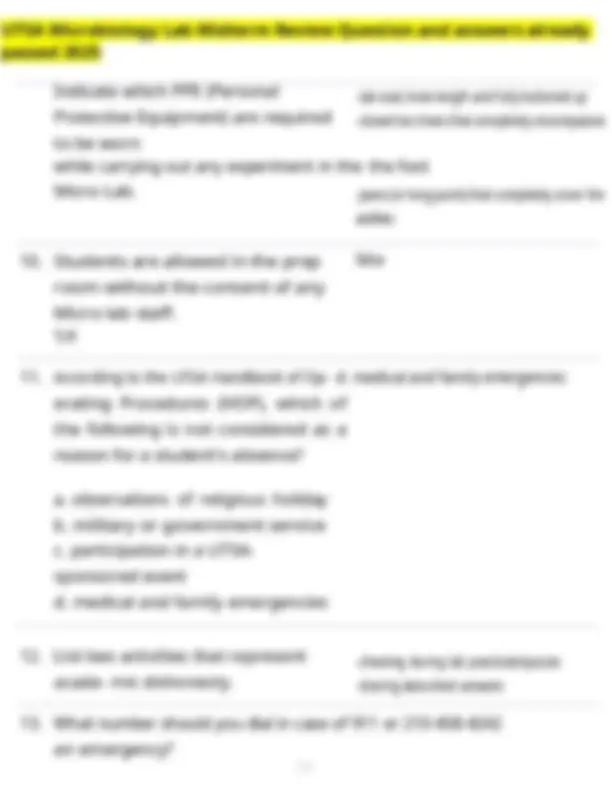
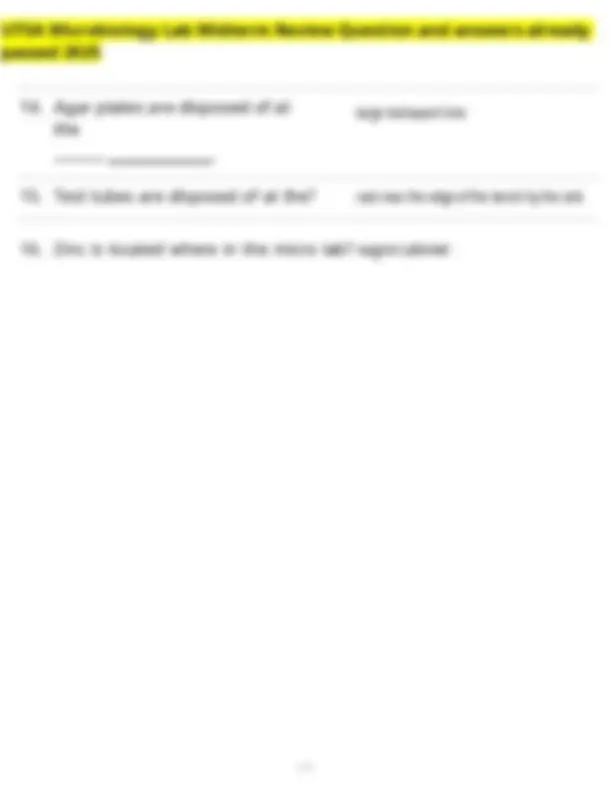
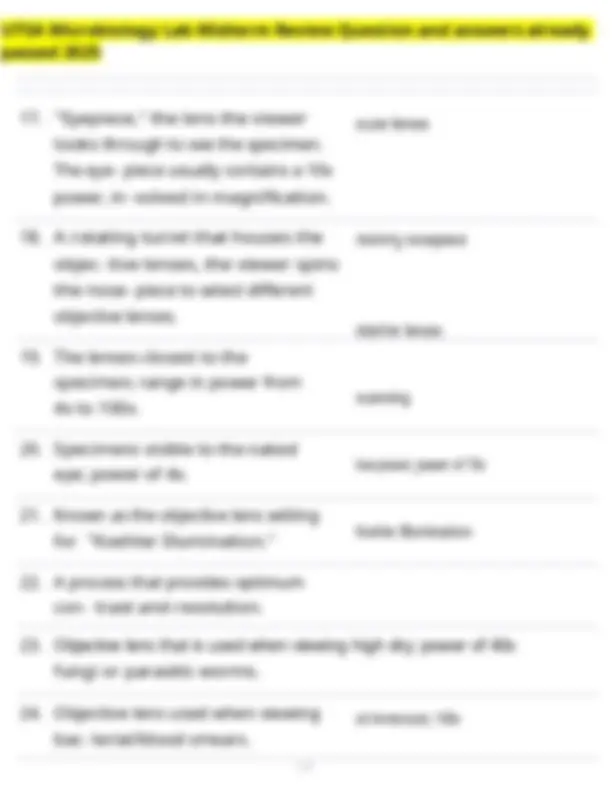
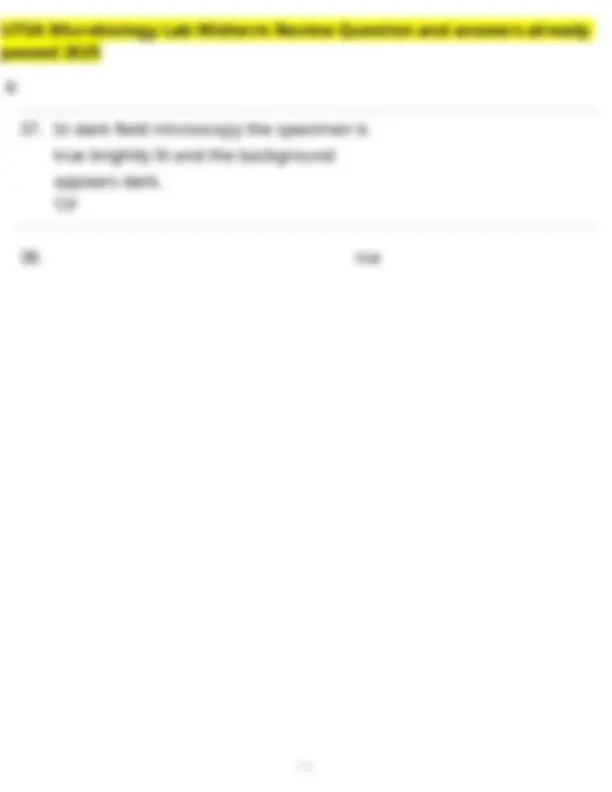
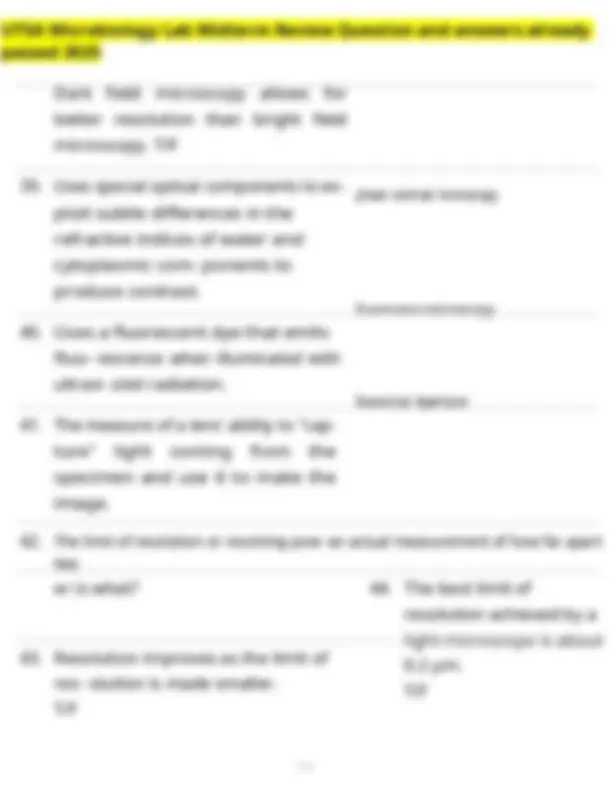
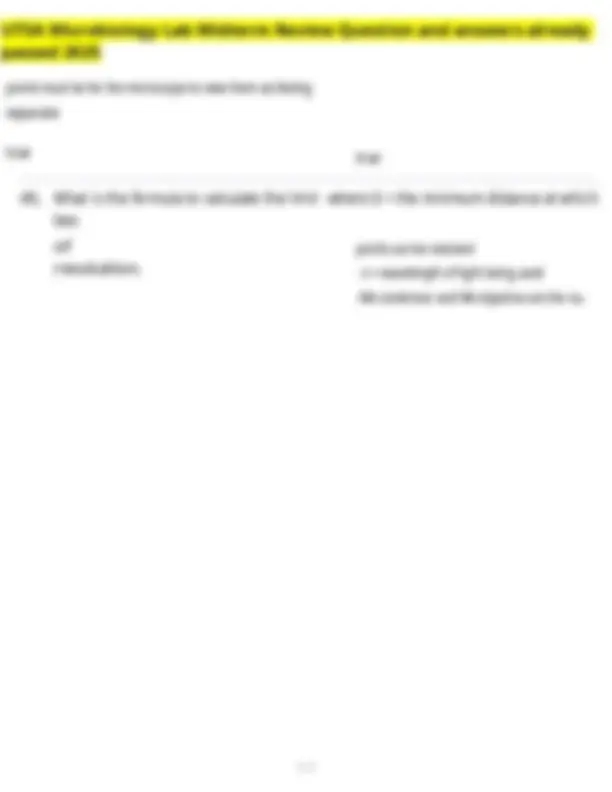
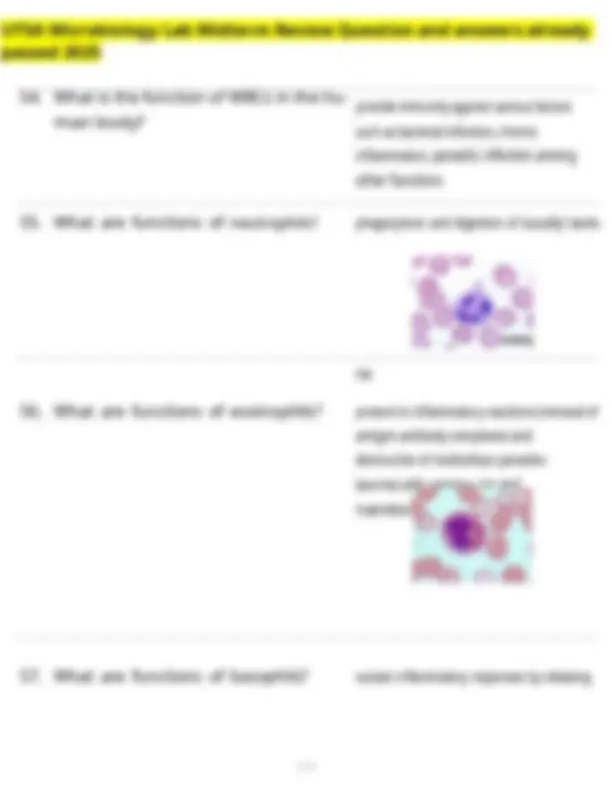
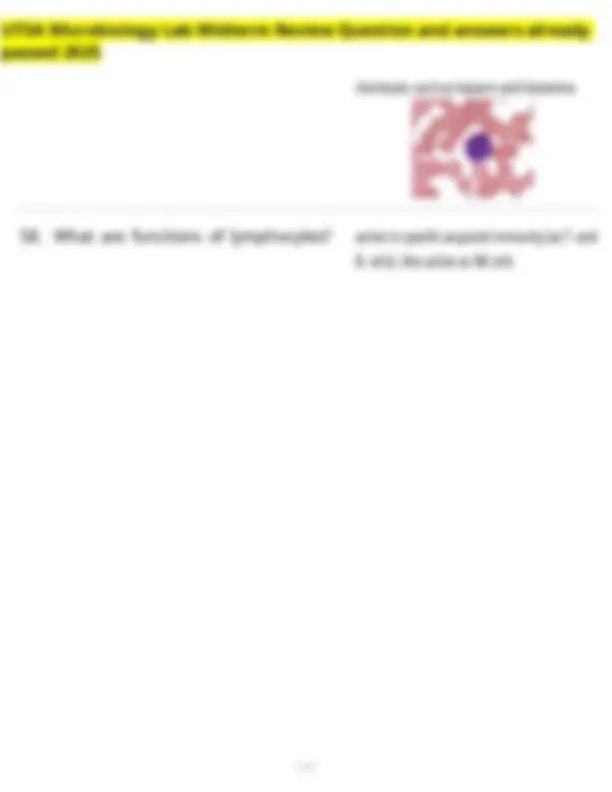
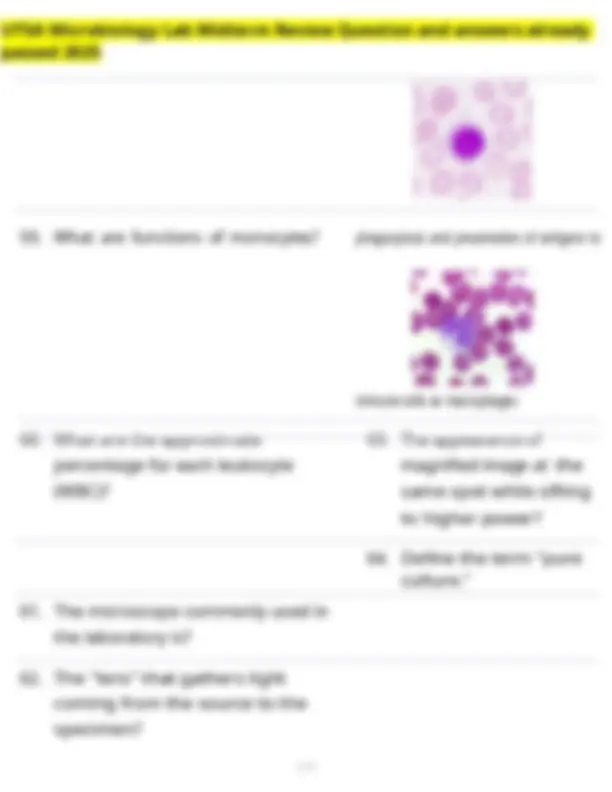
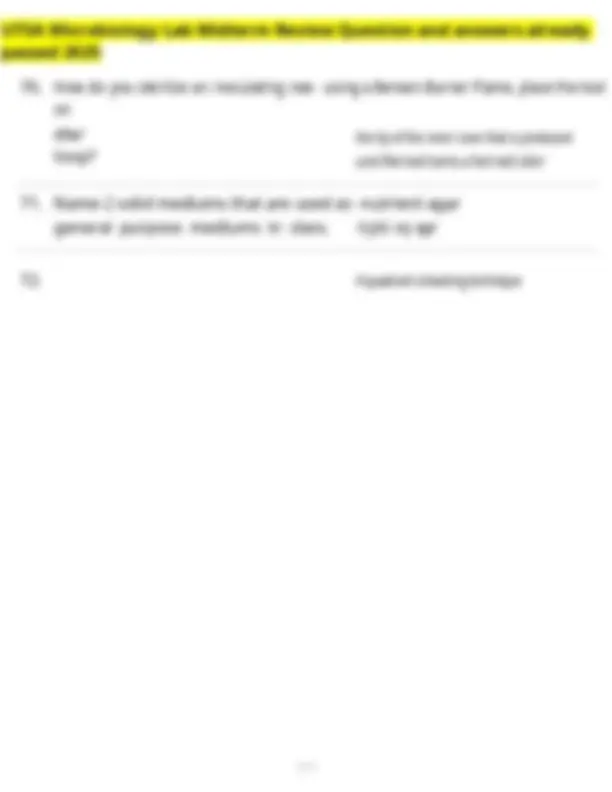
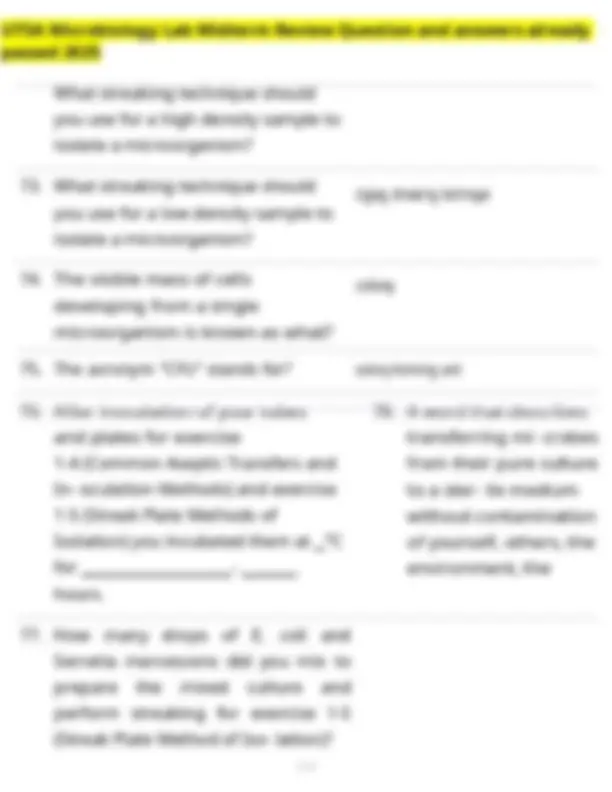
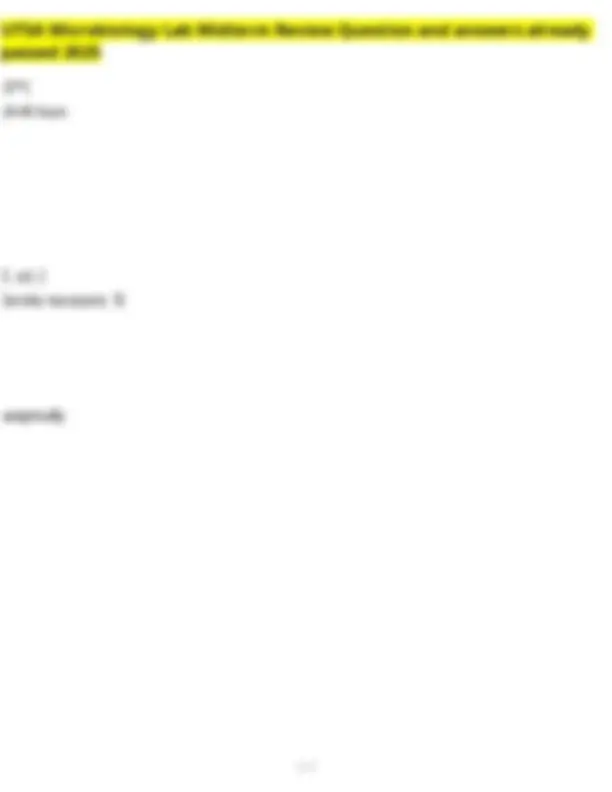
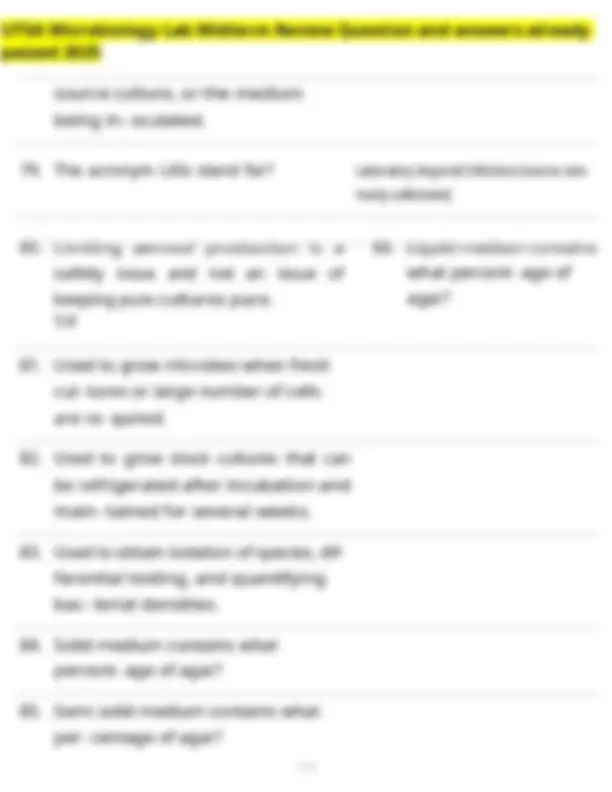
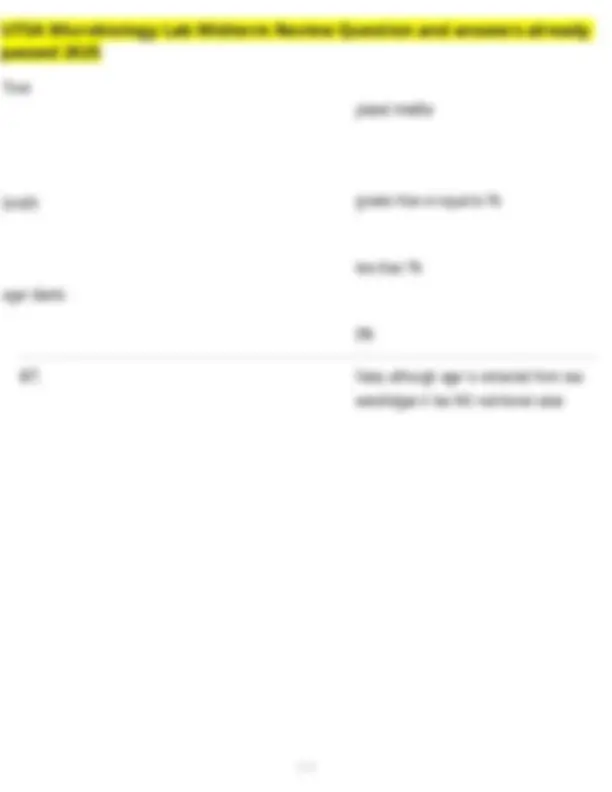
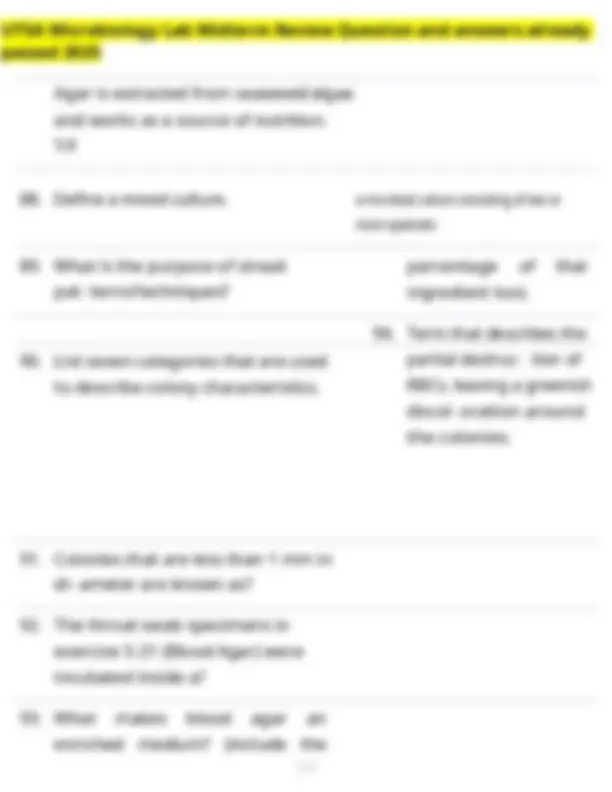
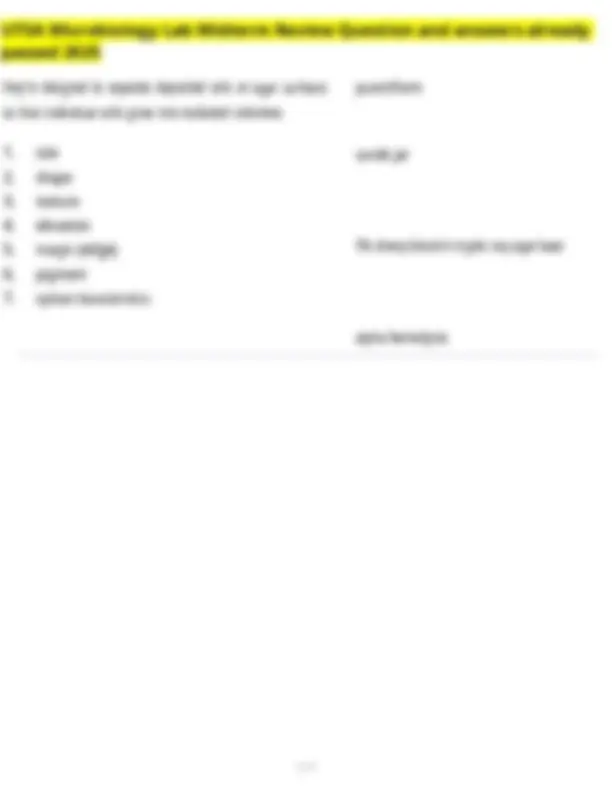
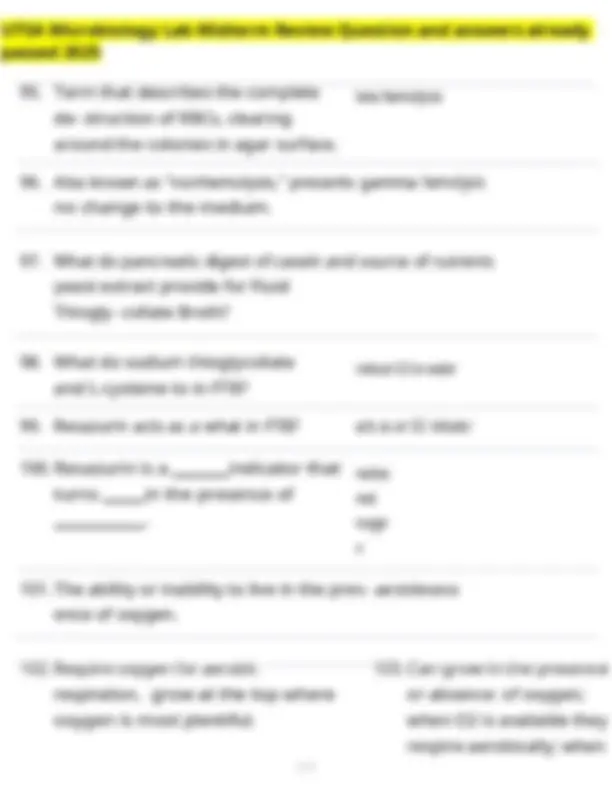
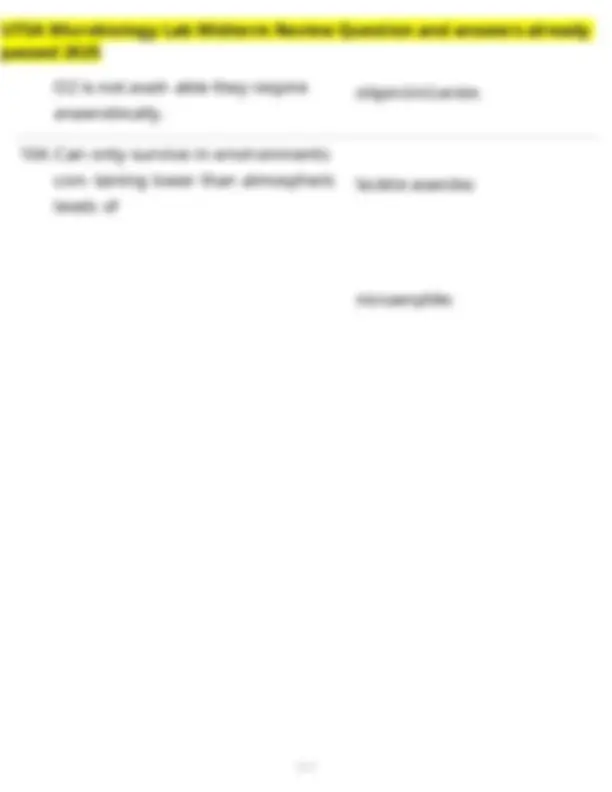
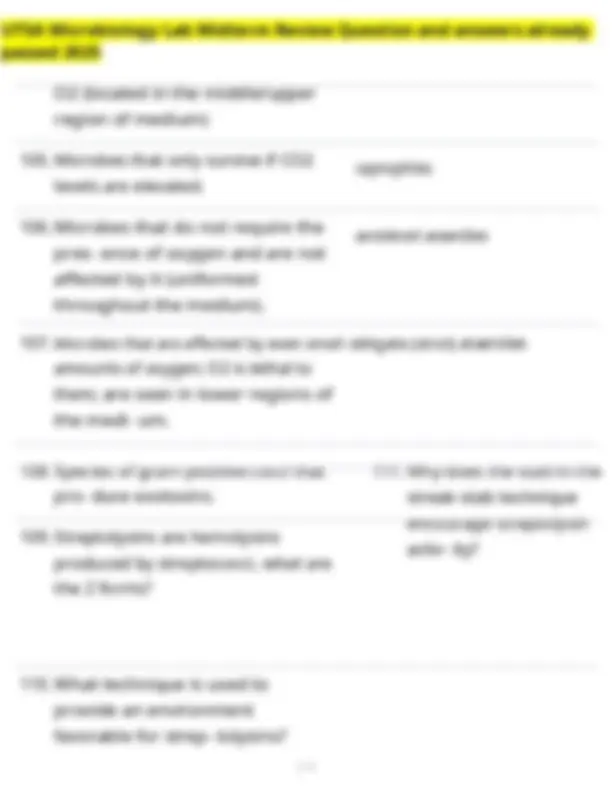
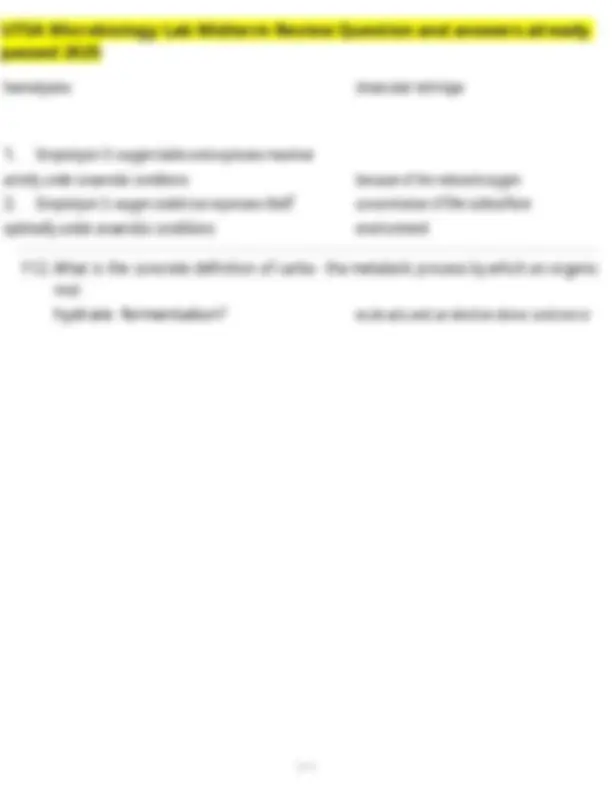
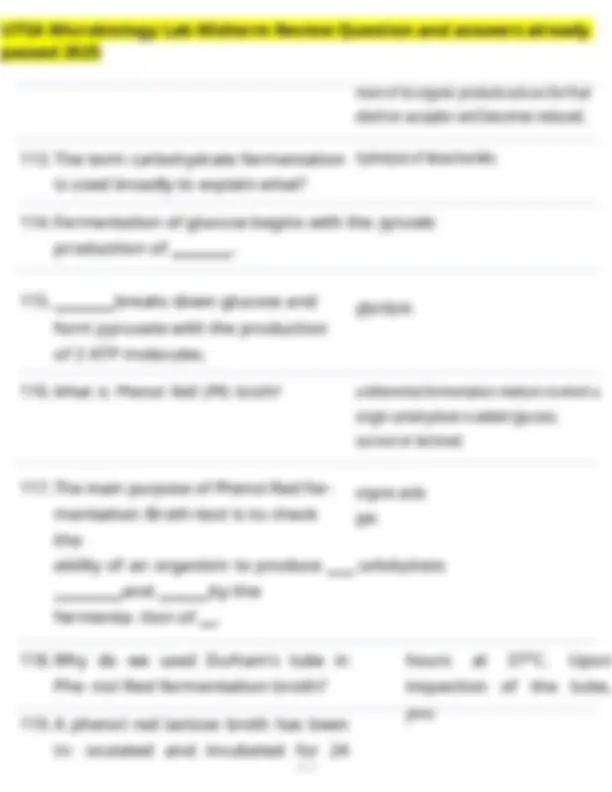
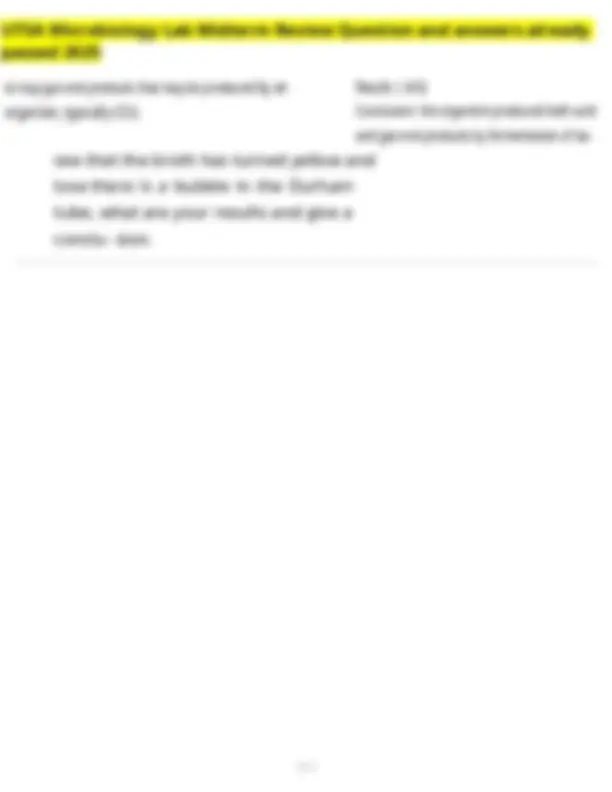
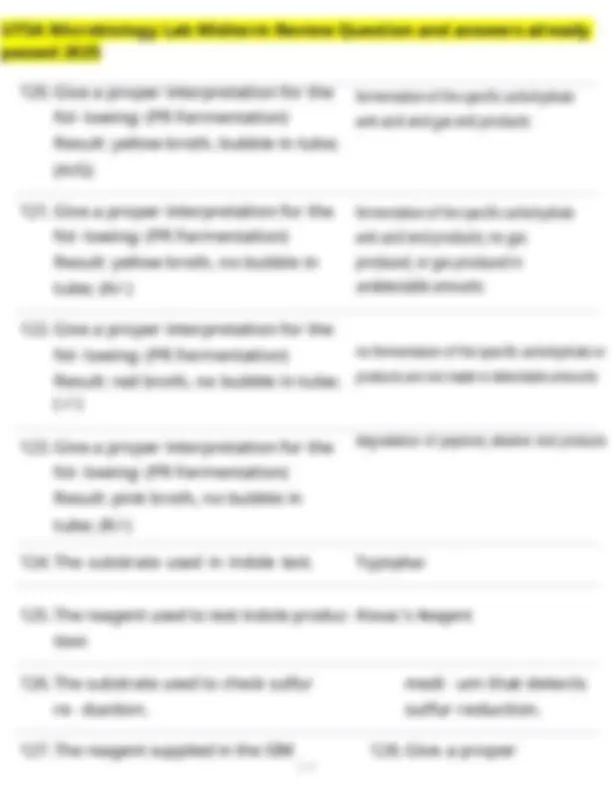
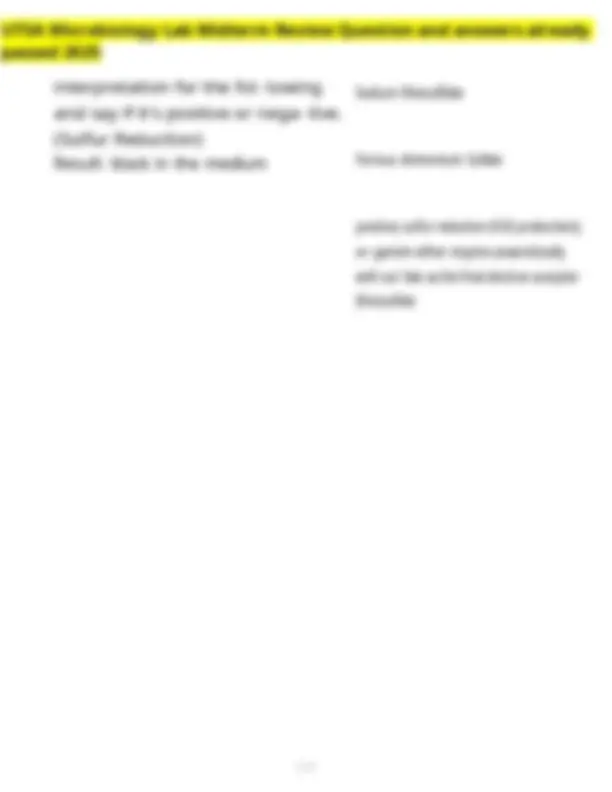
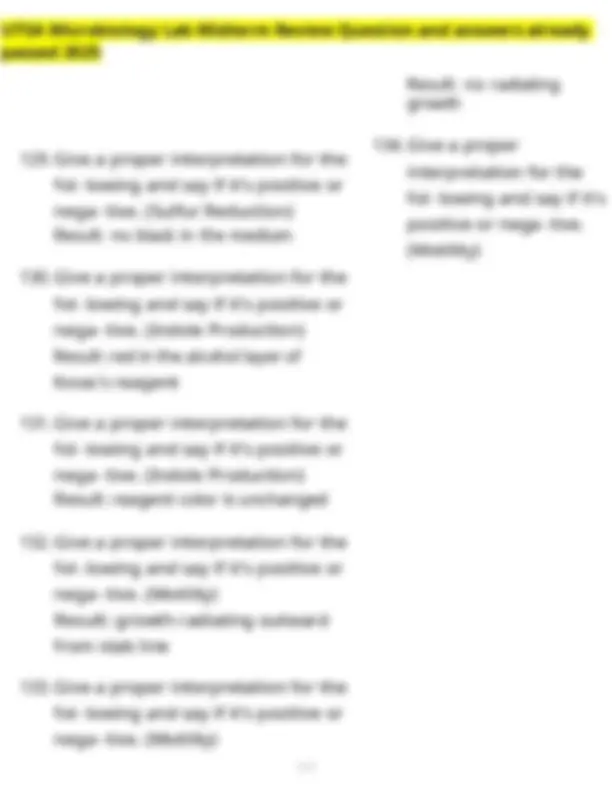
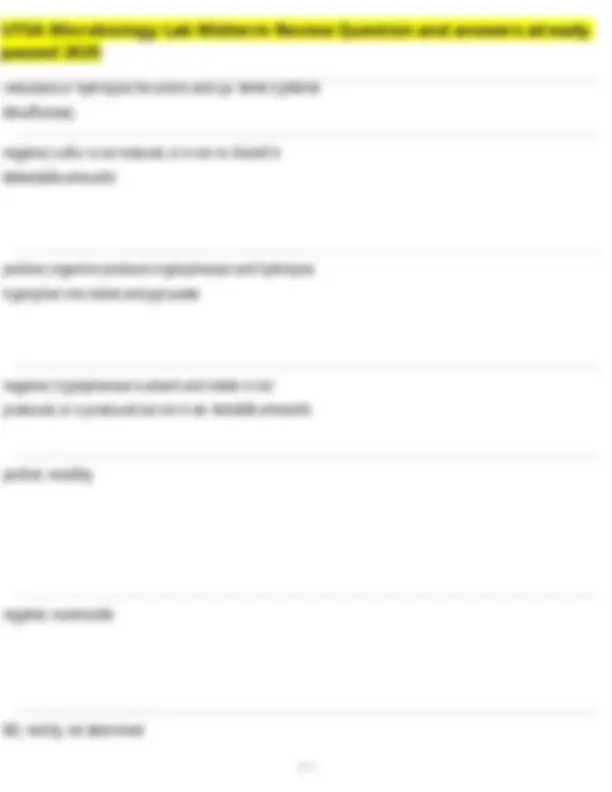
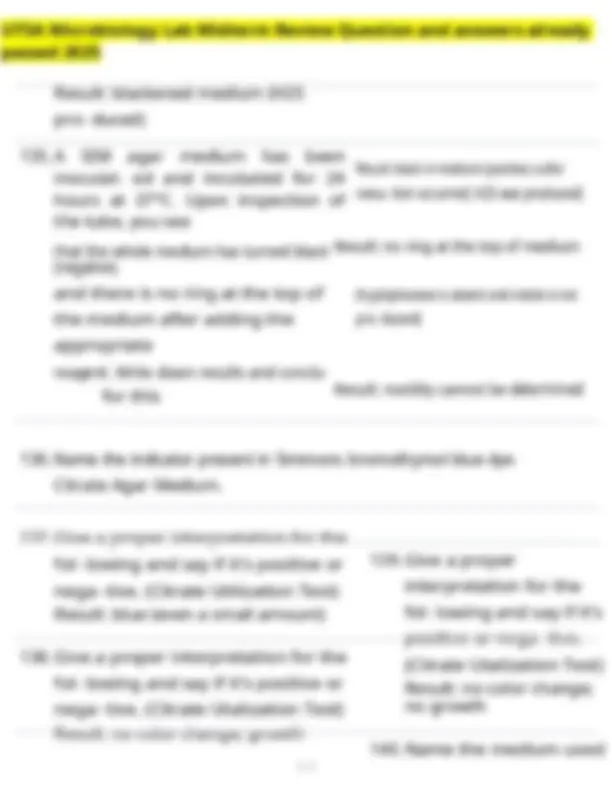
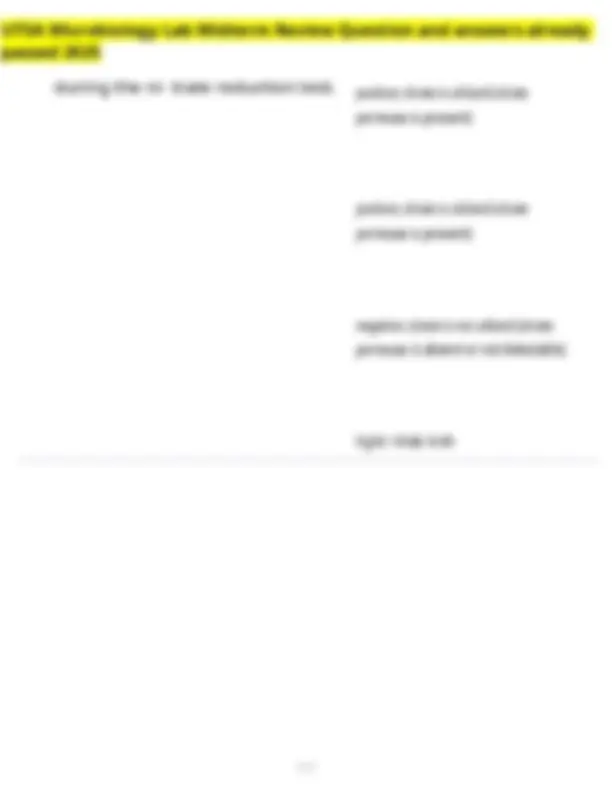
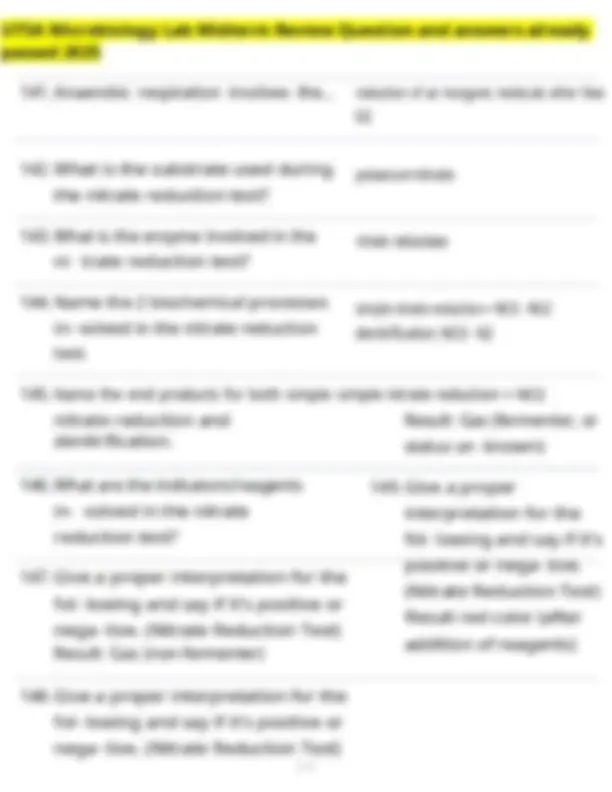
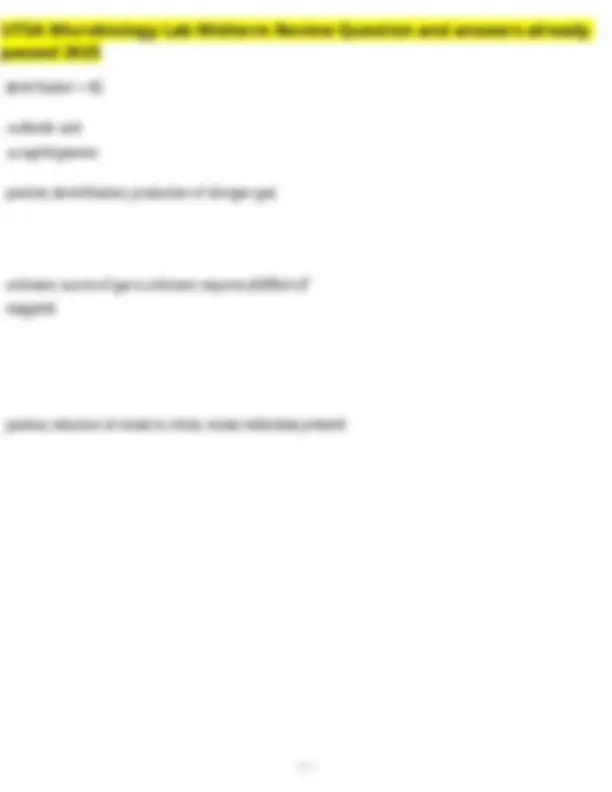
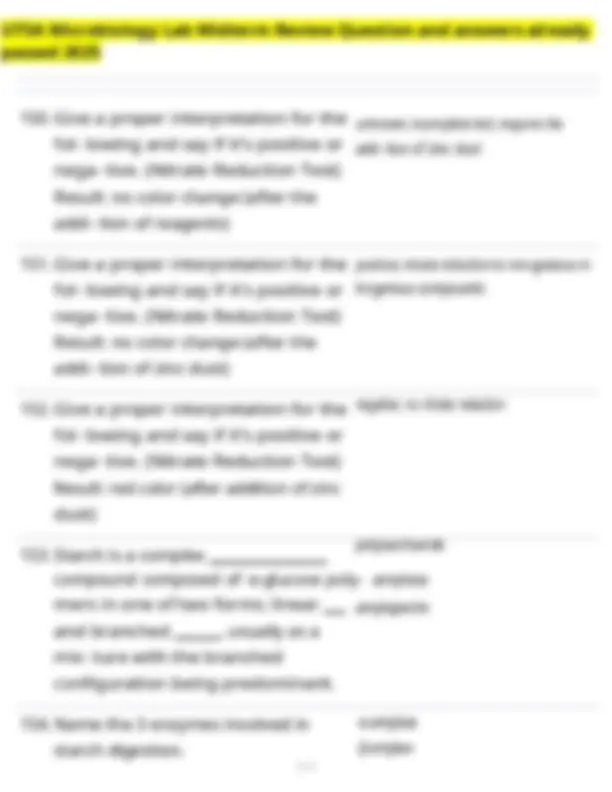

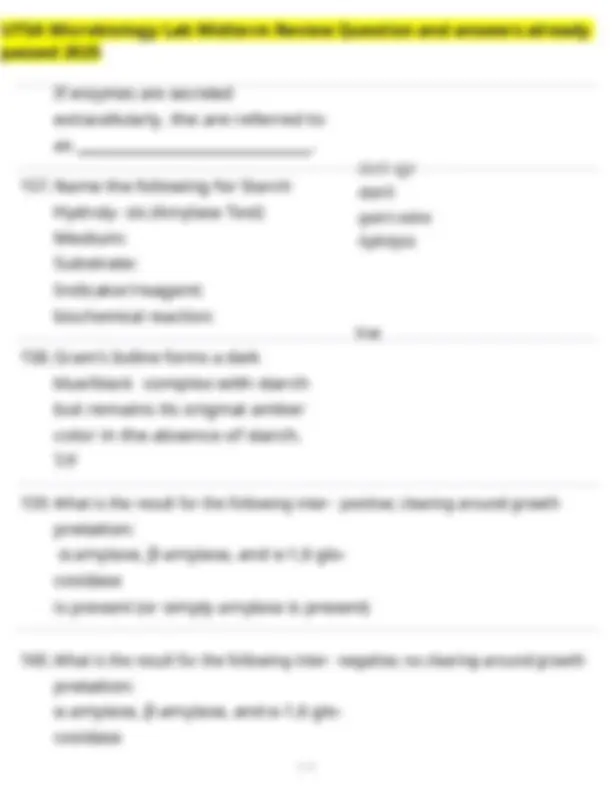
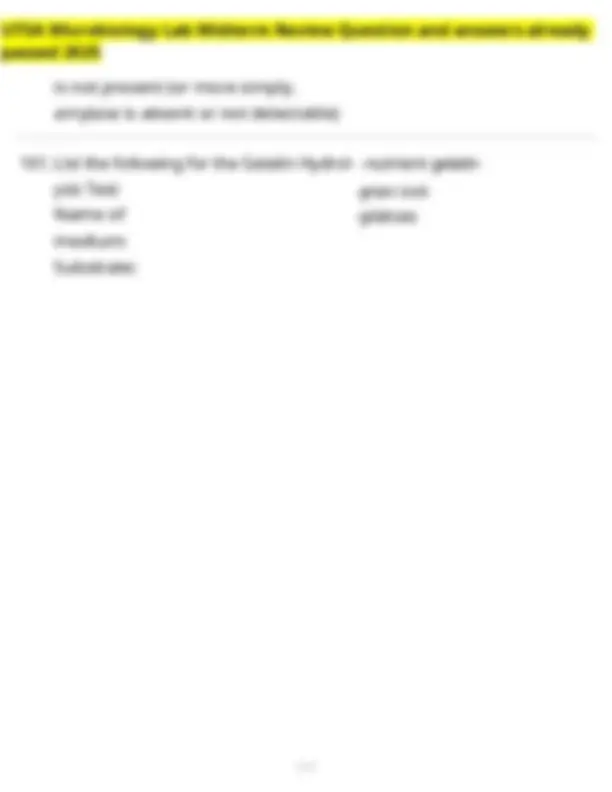
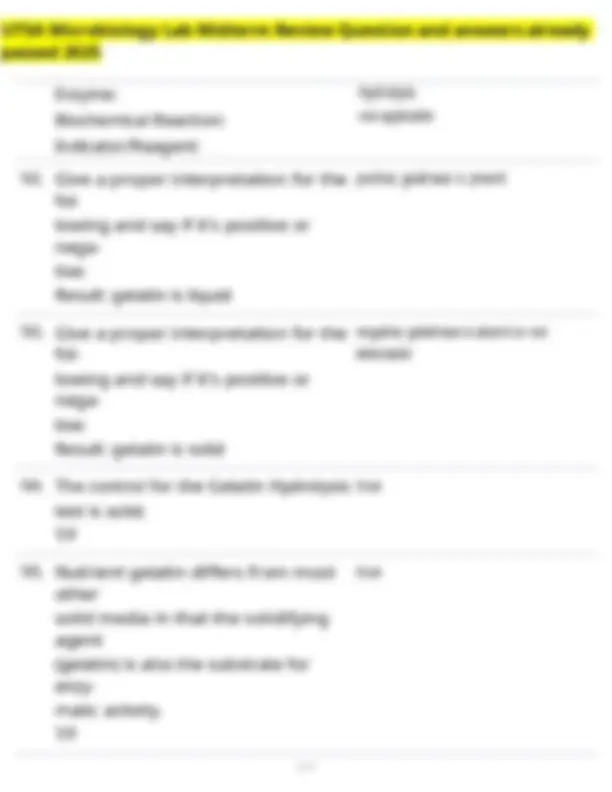
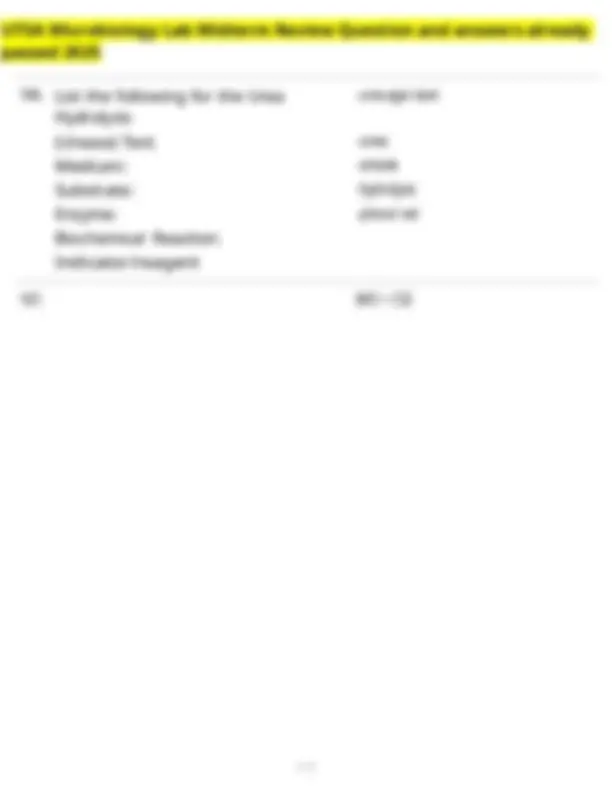
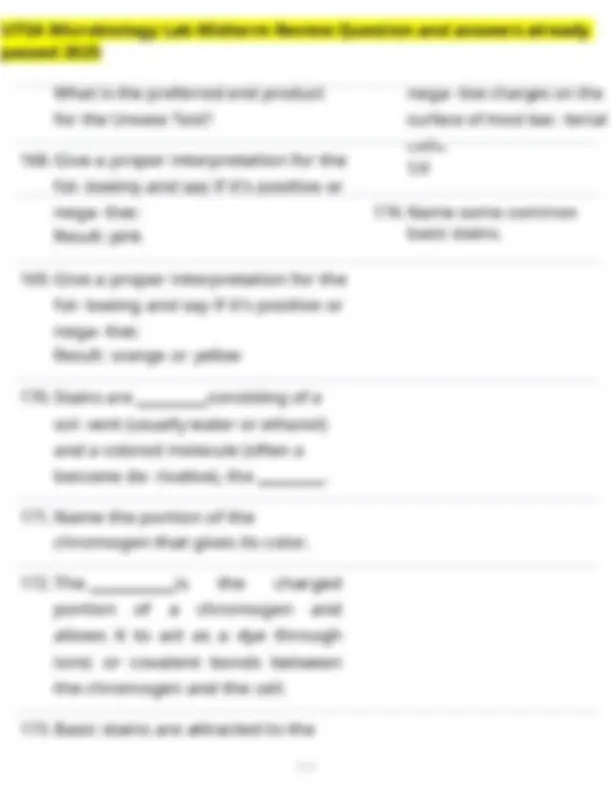
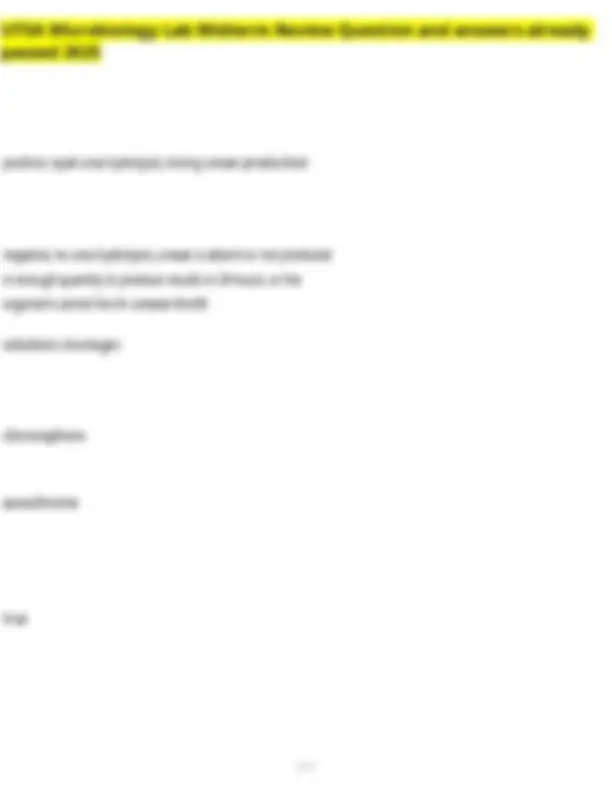
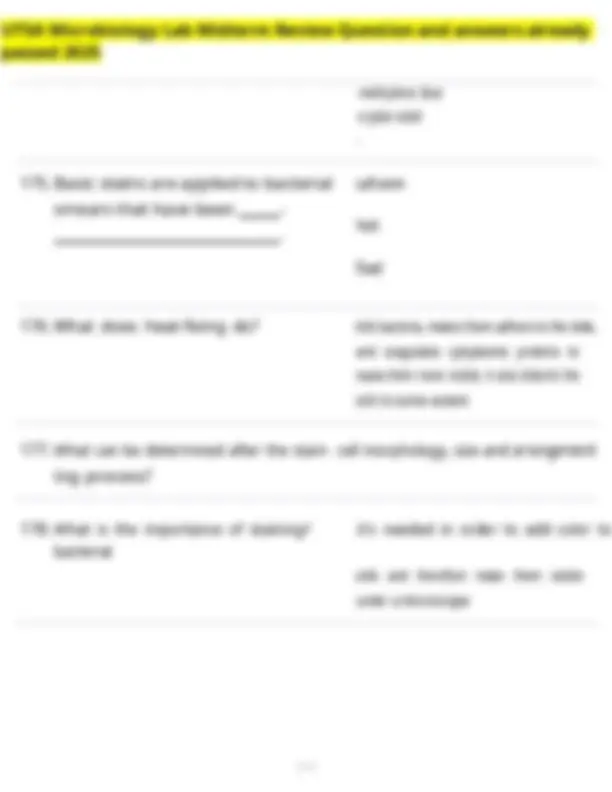


Study with the several resources on Docsity

Earn points by helping other students or get them with a premium plan


Prepare for your exams
Study with the several resources on Docsity

Earn points to download
Earn points by helping other students or get them with a premium plan
Community
Ask the community for help and clear up your study doubts
Discover the best universities in your country according to Docsity users
Free resources
Download our free guides on studying techniques, anxiety management strategies, and thesis advice from Docsity tutors
UTSA Microbiology Lab Midterm Review Question and answers already passed 2025
Typology: Exams
1 / 47

This page cannot be seen from the preview
Don't miss anything!








































passed 2025
passed 2025
passed 2025
passed 2025
passed 2025
passed 2025 lit
passed 2025 points must be for the microscope to view them as being separate true (^) true
passed 2025 merical apertures of condenser lens and and objective lens
passed 2025
passed 2025 chemicals, such as heparin and histamine.
passed 2025 neutrophils: 55% - 65% lymphocytes: 25% - 33% monocytes: 3% - 7% eosinophils: 1% - 3% basophils: <0.2% bright-field microscope condenser par-positional
passed 2025 a culture has isn't mixed with another microor- ganism, only 1 species/microorganism is pre- sent
passed 2025 What streaking technique should you use for a high density sample to isolate a microorganism?
passed 2025 37°C 24-48 hours E. coli: 2 Serretia marcescens: 10 aseptically